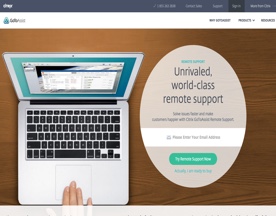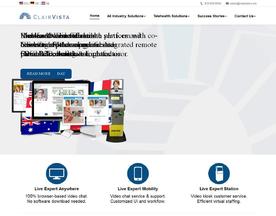In the modern business world, digital culture is becoming increasingly important. But what exactly is digital culture, and why does it matter for businesses?
What is a Digital Culture
Digital culture refers to the values, behaviors, and practices that a company adopts in regard to the use of digital technology. This includes how the company uses digital tools to communicate, collaborate, and operate internally and engages with customers and stakeholders online. A company with a strong digital culture is one that is able to adapt to new technologies and digital trends and that is able to use these technologies to innovate and improve its operations.
Why is Digital Culture Important?
The rise of remote work has escalated the speed of digital transformation and the importance of building and maintaining a strong digital culture in all businesses.
Remote and hybrid working arrangements have also presented significant challenges. Many employees struggle to stay motivated and focused when working from home and to balance their work and personal lives.
Communication and collaboration have proven difficult for many teams when members are not physically present in the same location. Addressing these challenges, businesses can use digital platforms to their advantage and gain a competitive edge over their rivals.
Digital tools and platforms can play an important part by allowing businesses to improve communication and collaboration among team members, enhance the customer experience, and increase efficiency and productivity. A strong digital culture can foster innovation and creativity within an organization, as employees are able to use technology to experiment and test new ideas.
The Benefits of Strong Digital Cultures
There are many benefits to building a strong digital culture and improving customers’ digital experience. Some of the most significant benefits include the following:
Improved communication and collaboration: Digital platforms and tools can help employees communicate and collaborate more effectively within their team and the organization. This can lead to better decision-making and increased productivity.
Enhanced customer experience: A strong digital culture can help businesses to better understand and meet the needs of their customers. By using digital tools to gather and analyze customer data, businesses can improve the customer experience and build stronger relationships with their customers.
Increased efficiency and productivity: Digital technologies can help businesses to streamline processes, automate tasks, and reduce the time and effort required to complete tasks. This can lead to increased efficiency and productivity.
Greater competitiveness and innovation: Companies that can effectively use digital technologies to their advantage can gain a competitive edge and drive growth. A strong digital culture can also foster innovation and creativity within an organization, as employees are able to use technology to experiment and test new ideas.
Attraction and retention of top talent: Companies with strong digital cultures are often more attractive to top talent, as they offer employees the opportunity to work with cutting-edge technologies and develop new skills. This can help businesses to attract and retain the best employees.
How to Build a Strong Digital Culture
Assess your current digital capabilities
The first step in building a digital culture is to assess your company’s current level of digital proficiency. Identify the tools and technologies that your company is already using, and assess their effectiveness. Look for areas where you can improve your use of technology to enhance communication, collaboration, and productivity.
Set clear goals and objectives
Once you understand your current digital capabilities, you can start to set goals and objectives for your digital strategy. These should be specific, measurable, achievable, relevant, and time-bound (SMART). This will help you stay focused and progress toward your digital goals. Invest in training and resources
New Technologies
Companies must invest in understanding emerging technologies and how they can benefit their organization. Keeping up to date on the newest technologies can help foster a digital culture of innovation and creativity
Invest in Training and Resources
To support the transition to digital culture, it’s important to invest in training and resources for your employees. This could include providing access to online courses or training programs or hiring a digital coach or consultant to help your team get up to speed.
Learning and experimentation
Building a digital culture is an ongoing process, and it’s important to encourage a culture of continuous learning and experimentation within your organization. Encourage your employees to try new technologies and approaches, and give them the freedom to test and iterate on their ideas.
Lead by example
As a business leader, it’s important to model the behaviors and practices that you want to see in your team. Show your commitment to digital culture by using digital tools and platforms to communicate and collaborate with your team and encourage others to do the same to increase employee engagement.

Digital Technologies: Software & Tools
Thankfully there are many different types of digital technology and tools that businesses can use to support digital transformation and develop thriving digital environments.
Collaboration and Communication Tools
These tools, such as Slack, Microsoft Teams, and Google Chat, allow employees to communicate and collaborate in real-time, regardless of location.
Slack is a messaging and collaboration platform that allows teams to communicate in real-time. It includes public and private channels for group or individual communication and the ability to share files, conduct video and audio calls, and integrate with other tools and services.
Microsoft Teams is a collaboration platform that is part of the Microsoft Office 365 suite of tools. It allows teams to chat, hold meetings, share files, and work on projects together in one place. Microsoft Teams includes features such as video conferencing, screen sharing, and integration with other Microsoft apps and services.
Google Chat is a communication platform that allows users to send messages, make voice and video calls, and share files. It is part of the Google Workspace suite of tools, which includes Gmail, Google Drive, and other productivity apps. Google Chat can be accessed from a variety of devices, including laptops, smartphones, and tablets.
Project Management and Task Management Tools
A digital environment allows tools such as Asana, Trello, and Jira to help teams to track and manage their tasks and projects.
Asana is a project management tool that allows teams to create and assign tasks, track progress, and collaborate on projects in one place. It includes features such as a shared calendar, file storage, and integrations with other tools and services.
Trello is a project management tool that uses a visual, kanban-style interface to help teams organize and prioritize their work. It allows users to create boards, lists, and cards to represent tasks, ideas, and other items and to collaborate with team members in real time.
Jira is a project management tool specifically designed for software development teams. It allows teams to track and manage their work, including defects, issues, and tasks, and to collaborate on projects in one place. Jira includes features such as agile project management tools, reporting, and integrations with other tools and services.
Cloud Storage and File Sharing Tools
Services like Google Drive, Dropbox, and OneDrive allow employees to access and share files from anywhere, on any device
Google Drive is a file storage and sharing service part of the Google Workspace suite of tools. It allows users to store and access their files, including documents, spreadsheets, and presentations, from any device. Google Drive includes real-time collaboration, version history, and integration with other apps and services.
Dropbox is a cloud-based file storage and sharing service that allows users to store and access files from any device. It includes file versioning, collaboration tools, and integration with other apps and services.
OneDrive is a file storage and sharing service that is part of the Microsoft Office 365 suite of tools. It allows users to store and access their files, including documents, spreadsheets, and presentations, from any device. OneDrive also includes file versioning, real-time collaboration, and integration with other Microsoft apps and services.
Customer Relationship Management (CRM) Tools
CRM tools, such as Salesforce, HubSpot, and Zoho, help businesses manage their customer interactions and track customer data.
Salesforce is a cloud-based CRM platform that offers a variety of tools and features for managing customer relationships and data. It includes features such as a customer database, sales and marketing automation, customer service tools, and integration with other apps and services.
HubSpot is a CRM platform that offers a range of tools and features for managing customer relationships, including a customer database, lead tracking, and marketing automation. It also includes features such as email marketing, landing pages, and integrations with other apps and services.
Zoho is a CRM platform that offers a range of tools and features for managing customer relationships, including a customer database, sales, and marketing automation, and customer service tools. It also includes project management, accounting, and integration with other apps and services.
Social Media Platforms
Social media platforms like Facebook, Twitter, Instagram, and LinkedIn allow businesses to create a cohesive digital experience for their customers, share information, engage with their audience, and build relationships with their followers. Social media software tools let you manage your social media activity and save time and resources within your business.
Hootsuite: Hootsuite is a social media management platform that allows businesses to manage and schedule posts across multiple social media platforms, including Facebook, Twitter, Instagram, LinkedIn, and more. It also includes analytics, team collaboration, and integration with other apps and services.
Buffer: Buffer is a social media management platform that allows businesses to schedule posts across multiple social media platforms, including Facebook, Twitter, Instagram, LinkedIn, and more. It includes analytics, team collaboration, and integration with other apps and services.
Canva: Canva is a design tool that allows businesses to create professional-looking graphics and marketing materials for social media. It includes a library of templates, images, and fonts, allowing users to customize their designs with their branding and content. Canva can be used to create a variety of marketing materials, including social media posts, banners, and infographics
Video Conferencing and Webinar Tools
Tools like Zoom, Skype, and Google Meet enable employees to have face-to-face meetings and presentations remotely.
Zoom is a cloud-based video conferencing platform that allows users to conduct meetings and presentations over the internet. It includes video and audio calling, screen sharing, and meeting scheduling and recording. Zoom can be accessed from a variety of devices, including laptops, smartphones, and tablets.
Skype is a video conferencing platform that allows users to conduct meetings and make voice and video calls over the internet. It includes screen sharing, instant messaging, and integration with other Microsoft apps and services. Skype can be accessed from a variety of devices, including laptops, smartphones, and tablets.
Google Meet is a video conferencing platform part of the Google Workspace suite of tools. It allows users to conduct meetings and presentations over the internet and includes features such as video and audio calling, screen sharing, and integration with other Google apps and services. Google Meet can be accessed from a variety of devices, including laptops, smartphones, and tablets.
Final Thoughts on Digital Cultures
Digital cultures are becoming increasingly important in the modern business world as digital technologies continue to transform the way that companies operate and engage with their customers. A strong digital culture can help businesses to improve communication and collaboration among team members, enhance the customer experience, and increase efficiency and productivity. It can also foster innovation and creativity within an organization, as employees are able to use technology to experiment and test new ideas.
However, building a new culture within a company is not always easy. It requires a commitment to change and a willingness to embrace new technologies and ways of working. It also requires investment in training and resources to support the transition to digital culture.
Despite the challenges, the benefits of digital culture in business are clear. Companies that are able to successfully create and maintain a digital culture will be well-positioned for success in the 21st century.














